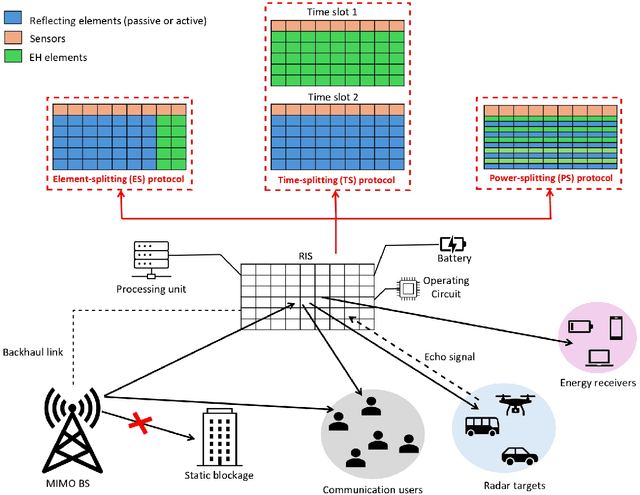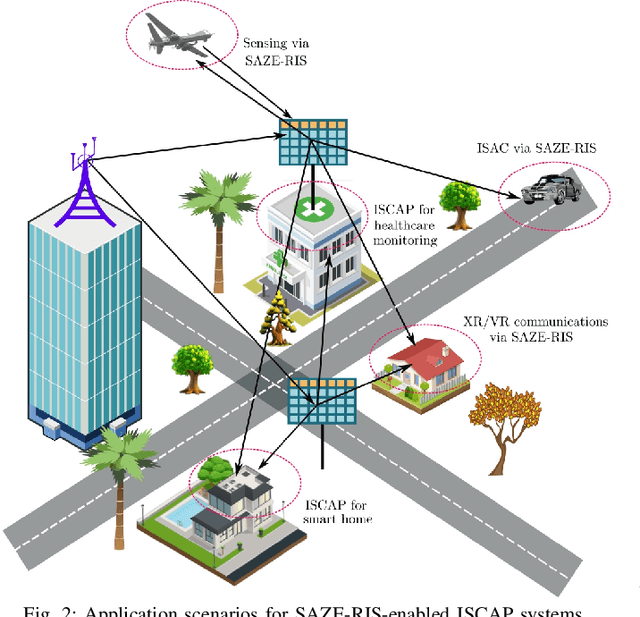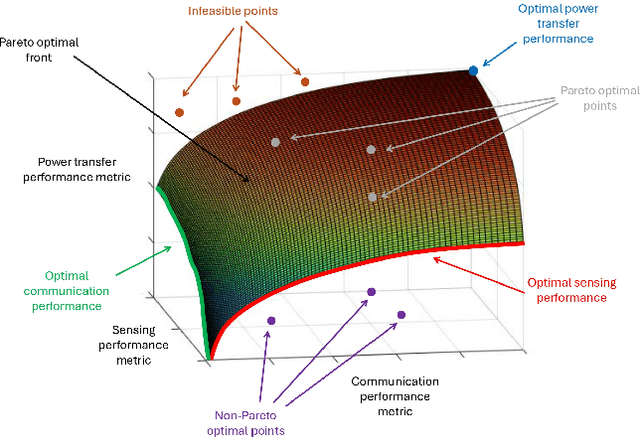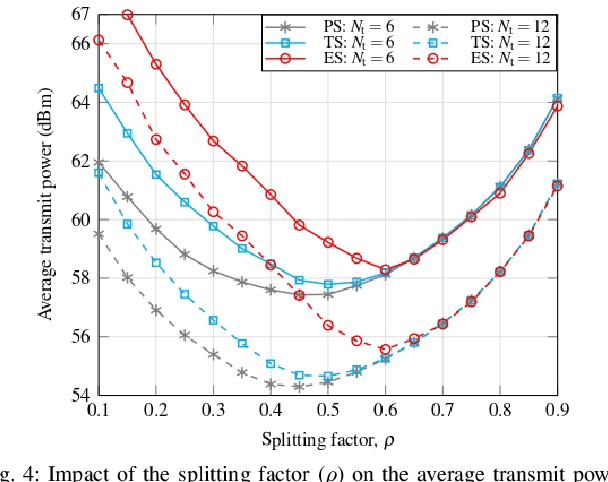Multi-Functional RIS for a Multi-Functional System: Integrating Sensing, Communication, and Wireless Power Transfer
Paper and Code
Oct 11, 2024



Communication networks are evolving from solely emphasizing communication to facilitating multiple functionalities. In this regard, integrated sensing, communication, and powering (ISCAP) provides an efficient way of enabling data transmission, radar sensing, and wireless power transfer simultaneously. Such a multi-functional network requires a multi-functional architectural solution. Toward this end, sensor-aided zero-energy reconfigurable intelligent surfaces (SAZE-RISs) offer an energy-efficient solution for ISCAP by meeting the requirements of the end users as well as supplying power for the RIS. This paper explores the use of SAZE-RIS within the ISCAP framework. First, we present the general system architecture, operational protocols, and main application scenarios for employing SAZE-RIS in ISCAP. Next, we discuss methods for managing the conflicting requirements of communication, sensing, and powering within ISCAP and the role of SAZE-RIS in this process. We then provide a detailed case study complete with simulation results, offering valuable insights into the design choices and tradeoffs that come into play when adopting this technology. Furthermore, we discuss the related challenges and open research avenues, highlighting areas that require further exploration to fully realize the potential of SAZE-RIS within this ISCAP framework.
 Add to Chrome
Add to Chrome Add to Firefox
Add to Firefox Add to Edge
Add to Edge